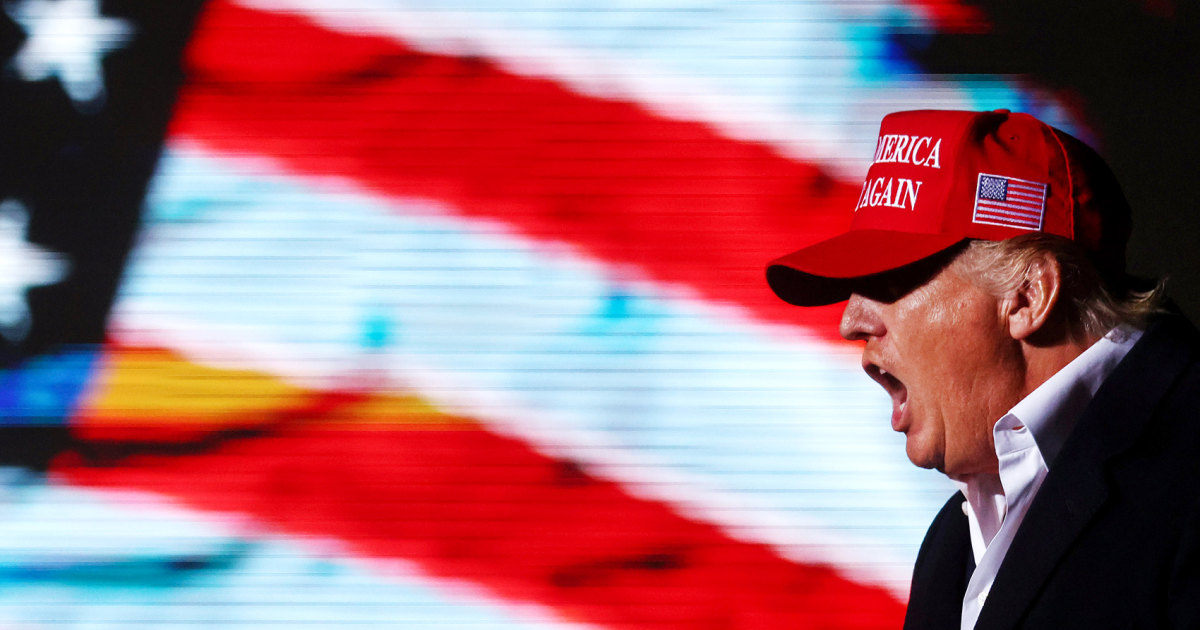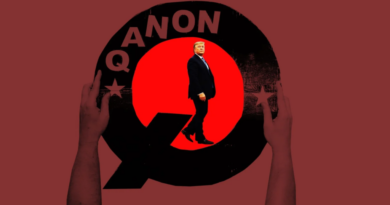QAnon song played by Donald Trump removed from tech platforms

A song played at several Donald Trump rallies and speeches that has become known as a QAnon anthem has been removed from YouTube and Spotify after the creator of the song claimed that it was used by Trump and others without proper permissions.
In an email to NBC News, composer Will Van De Crommert wrote that he was “exploring legal options” and that “this particular track, which was originally entitled Mirrors, is available to license online. I however was not notified of any licenses for political rallies, nor did I authorize such use.”
A YouTube representative said in an email Monday that the company “removed the video in question for violating our harassment policy, which prohibits content targeting someone by suggesting they’re complicit in a conspiracy theory used to justify real-world violence, such as QAnon.”
A Spotify representative said that “the content in question was removed following an infringement claim.”
Van De Crommert is a composer who uploads music online, where it is available to license. His music has been used by CBS and NBC (NBC is owned by NBCUniversal, the parent company of NBC News). He first released the song “Mirrors” in 2019 and uploaded it to various platforms. The song is a sweeping and somber composition with no lyrics.
The song was uploaded to YouTube and Spotify in 2020 by a different user with the screen name “Richard Feelgood” under the title “Wwg1wga,” which is short for the QAnon conspiracy theory slogan “Where we go one we go all,” alongside other uploads with QAnon names. That user did not respond to a request for comment.
QAnon is a conspiracy theory that revolves around an anonymous online poster who goes by Q. Believers of the conspiracy theory think that Q is transmitting messages about Trump, who followers believe is working to take down a child trafficking ring run by a cabal of global elites.
Van De Crommert said the uploads in question are identical to his and that he has no association with the account that put his music online alongside QAnon language.
“I do not align with the views of QAnon, and this individual has unlawfully distributed my music under their own name,” he said.
After the song was published under the QAnon name, it gained attention from conspiracy theory followers. On YouTube it was viewed over 75,000 times.
In August, Trump’s account on the conservative-leaning video website Rumble posted a video using the song as background music. Users on a pro-Trump forum and a Telegram channel quickly identified the song using the sound recognition app Shazam and cited it as proof that the QAnon conspiracy theory was real, according to Media Matters for America, a liberal watchdog organization.
Trump first spoke over the song in a September rally in Pennsylvania, according to The Washington Post.
It gained national attention, however, when he played it as he spoke at an Ohio rally later that month. Members of the audience raised their index fingers in response, seemingly making a “one” gesture interpreted by some to be a reference to the WWG1WGA QAnon slogan. In North Carolina later that week, the song was played at another Trump rally.


